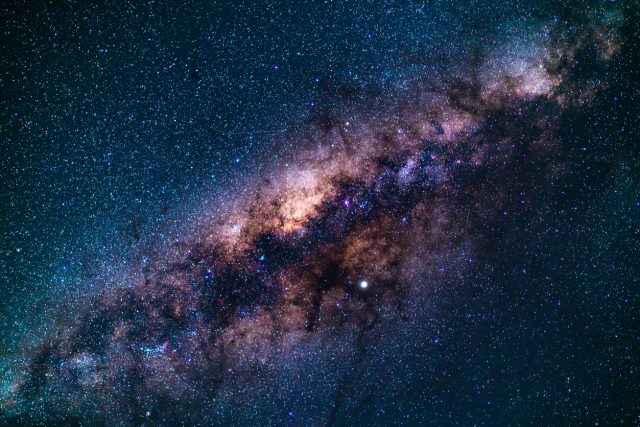Sagittarius B2: alcohol found in deep space
It turns out the cosmos has a drinks cabinet, and it’s located 390 light-years from the centre of our galaxy.

Sagittarius B2 (Sgr B2), a bloated molecular cloud of gas and dust stretching 150 light-years wide, is not only one of the galaxy’s prime star-forming factories — it also appears to be quietly brewing alcohol.
Astronomers have detected a veritable menu of alcohols in Sgr B2. Ethanol (C₂H₅OH) — the very same molecule found in wine or whisky — has been identified floating about in the icy vacuum of space.
Methanol (CH₃OH), a simpler cousin often used in less salubrious concoctions such as windshield washer fluid, is present in abundance, acting as the building block for more extravagant organics. Vinyl alcohol (C₂H₃OH), a less common and less intoxicating isomer, is also milling about.
These molecules form on the cold surfaces of dust grains, where atoms stick, shuffle and react, eventually getting kicked back into the gas phase via cosmic heating. Think of it as fermentation.
Propanol
In 2022, astronomers using the Atacama Large Millimeter/Submillimeter Array (ALMA) — essentially a massive, glorified eavesdropper on space — detected both isomers of propanol for the first time in the great void.
To the uninitiated, this might sound like chemical trivia. But for those of us who spend our evenings decanting wine while reading astrochemical journals (and why wouldn’t you?), it’s a thrilling signpost. These detections suggest that space is not only chemically rich but surprisingly sophisticated.
Partner Content
Galactic gastronomy
Beyond the bottle, Sgr B2 is brimming with culinary curiosities. Glycolaldehyde (CH₂OHCHO), a sugar-related molecule that might once have adorned early Earth’s biochemical breakfast table, is present in generous supply. It’s a ribose precursor, which makes it essential for forming RNA — nature’s original set of blueprints. Add to that a sprinkling of ethylene glycol (the stuff of antifreeze and astrobiological dreams), and you have the makings of a very cold, very distant molecular kitchen.
And then there’s ethyl formate (C₂H₅OCHO). The molecule responsible for the scent of rum and the taste of raspberries has been found diffused across this galactic cloud. This discovery prompted one scientist to claim that “space smells like rum and tastes like raspberries.” Which is charming, if a touch misleading. No one’s sipping this stuff from a coupe glass while gazing at the Horsehead Nebula.
From booze to biology
While it’s deeply satisfying to know the universe might share our enthusiasm for a good tipple, the implications are sobering in the best possible sense. The presence of complex organic molecules in Sgr B2 supports the theory that life’s building blocks aren’t exclusive to Earth’s bubbling primordial soup. They might have been delivered via comets or meteorites, gift-wrapped in organic goodness.
More intriguing still is the discovery of aminoacetonitrile, a precursor to glycine, the simplest of amino acids and a key character in life’s biochemical drama. It’s the equivalent of finding flour, sugar and eggs strewn across the kitchen: someone — or something — is baking.
In the end, Sagittarius B2 offers more than a cosmic curiosity. It’s a celestial distillery, a galactic winery, a molecular mixology lab. It brings together two of humanity’s deepest fascinations: the chemistry of alcohol and the mystery of life’s origins.
So, next time you pour a glass of wine or sniff a snifter of rum, raise it in the direction of Sagittarius B2. You may be closer to the stars than you think — chemically, anyway.
Related news
Kermit Lynch opens second retail space




